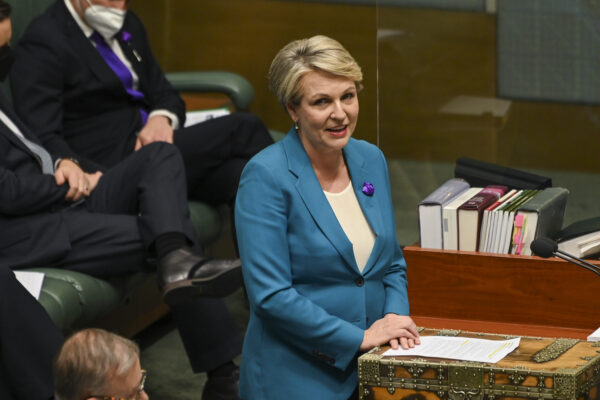Australia’s Approved Renewable Energy Projects Double in 10 Months
The Australian government has doubled the number of approved renewable energy projects since coming into power in May 2022 as it seeks to accelerate Australia’s transition to net-zero emissions.
In an interview with ABC radio, federal Environment Minister Tanya Plibersek said 11 renewable projects had received the green light from the government in the past ten months.
The minister noted that this was more than twice the five projects approved by the previous Coalition government during its first ten months, saying the Labor government had created “an environment of certainty” for investors.
“Businesses know that there is demand from the public for more renewable energy, and they know that there is support because the government has a clear target to get 82 percent renewables into our grid by 2030,” Plibersek said.
“This massive change in our economy with decarbonising our economy by getting cheaper, cleaner, renewable energy into people’s homes and businesses.”
According to Plibersek, there were big and small projects among the approvals, and 95 projects of various sizes were still waiting for the government’s permission.
“So we’ve got, for example, a 90-megawatt Port Hedland solar project in Western Australia,” she said. “There’s a bunch of quite different projects right across Australia.”
While the government is trying to bring more renewables online faster, it acknowledges that coal and gas still have a role in its energy plan.
“There will be coal and gas in Australia for the foreseeable future. It’s going to be part of our energy mix,” Plibersek said.
The environment minister also said the government had implemented other measures to ensure that Australia was meeting its potential as a renewable energy superpower, including signing the global methane pledge and introducing an electric vehicle strategy.
Plibersek Defends Labor’s Decision to Approve New Gas Projects
Amid its push for renewable energy, the Labor government faced criticism from environmentalists and the Greens party for approving some new fossil fuel projects, including oil and gas company Santos’ plan to open 116 new coal seam gas wells in Queensland’s Surat Basin.
In response, Plibersek said the 116 coal seam gas was a small expansion of a project that had been there for eight years.
“It’s a bit disingenuous of critics to be focusing on one project increasing in size by 1.3 percent,” she said of the Santos Surat Basin project.
The minister also noted that critics ignored the massive increase in businesses wanting to invest in renewables in Australia due to the government’s policy.

Meanwhile, Greens’ environmental spokesperson Senator Sarah Hanson-Young said the issue was not whether it was an expansion or a new approval but that Australia could not keep growing fossil fuels.
“I think we should be taking the advice of the world scientists, the International Energy Agency, the United Nations Secretary-General Antonio Guterres, and accepting that if we’re going to reduce pollution and do everything we can to stop dangerous global warming, then we can’t have any new expansion or any new opening of fossil fuel projects at all,” she said.
The senator also emphasised that Australia already had plenty of fossil fuels and did not need to open up new coal and gas projects.
“It’s not for Australia’s need. Most of this vast majority of it goes overseas, gets burnt overseas and pollutes the planet for all of us,” Hanson-Young said.
No Energy Price Relief for Australian Households
Despite this, more and more renewable projects have been approved and come online, but Australian households on the east coast continue to suffer from energy price hikes.
In March, the Australian Energy Regulator (AER) released the draft version of the default market offer (DMO) for the 2023-24 financial year, which highlighted a sharp rise in prices.
The DMO is the maximum rate energy retailers can charge residential and small business customers in three regions that are part of the National Electricity Market: New South Wales (NSW), South Australia and southeast Queensland.
While most consumers are on discounted contracts, the DMO serves as a benchmark for energy companies when they advertise their prices to customers.
If nothing changes, from July 1, NSW households are expected to see a 20.9-23.7 percent increase in electricity prices, while the rates for South Australia and southeast Queensland would soar by up to 21.8 percent and 19.8 percent, respectively.
For small business customers, price increases could go up by between 14.7 percent and 25.4 percent, depending on their regions and providers.




